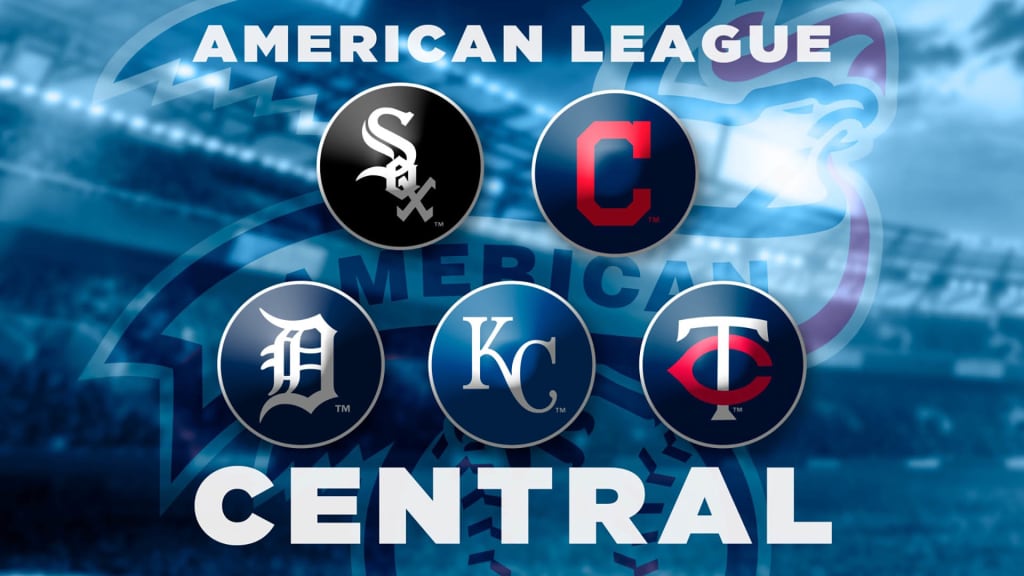
Scouts grade prospects and players on a sliding scale that involves the five main tools of baseball -- how well they hit, hit for power, run, play defense and throw. Most players are stronger in one area (or more) than the others, and the very few who excel at all are called, of course, "five-tool" players.
For this week's American League Central notebook, we polled our beat writers on which current Major Leaguer on the team they cover has the best hit tool. This doesn't necessarily mean who makes the best contact, though that's obviously part of it. It also extends to the quality of the contact -- how hard he hits the ball, and the results of those hits, whether they're good for simple base knocks or extra bases, if he's using all fields, and if he's consistently advancing runners.
Let's examine the players with the best hit tools in the AL Central:
Indians: Francisco Lindor
The race between Lindor and José Ramírez for this title is as tight as it can get. Both the shortstop and third baseman have led the Tribe’s offense over the last five seasons, but Lindor’s consistency throughout his career gives him just the slightest edge. Since his debut on June 14, 2015, Lindor has racked up 835 hits, which ranks 12th among all hitters in MLB since the start of the ’15 season. Beginning with his first full year in ’16, the Tribe’s All-Star shortstop has recorded the most hits in three of four seasons, trailing Ramírez by eight hits in 2017. Across the league, Lindor had the 15th most hits in ’16, 14th most in ’17 and eighth most in ’18. Though Ramírez has bested him in strikeout percentage with the 10th lowest in MLB since ’15 (Lindor’s is the 44th lowest) and has had 13 more doubles and triples than Lindor in that span, the shortstop’s .300 batting average on balls in play tops Ramírez's .284 to help give Lindor the slightest edge in having the Indians’ best hit tool. -- Mandy Bell
Royals: Whit Merrifield
Who has the best hit tool among today’s Royals? That’s an easy one -- Whit Merrifield.
There’s a reason Merrifield has led all of MLB in hits the past two seasons with 192 in 2018 and 206 in 2019 -- he can get the barrel of the bat on any pitch in the strike zone.
Merrifield has a knack for using the whole field. He can hit inside pitches or drive outside pitches the other way. In fact, in 2019, Merrifield pulled 32.2 percent of his batted balls, hit 37.3 percent straight away and hit 30.5 percent the opposite way.
“That’s what makes all good hitters good,” Hall of Famer George Brett once said of Merrifield. “You just go with wherever a pitch is pitched. If you just try to pull everything, you can be an easy out at times. But Whit can drive it anywhere in the park. That’s why he’s such a consistent hitter.”
Merrifield can also do one other thing to get hits: He can bunt. No one will forget the night Merrifield broke Brett’s club-record hitting streak last April. Merrifield got the new record at 31 straight games with a perfectly executed bunt single (that drove in a run, too) late in the game. -- Jeffrey Flanagan
Tigers: Miguel Cabrera
The power from Miggy’s Triple Crown days has waned with age and injuries, but the plate coverage and hit-churning bat are still there when he’s healthy. When Cabrera has the leg and back strength, he can pull line drives down the line and into the gap while also slashing liners to right and right-center with that trademark opposite-field swing. He gave up some of that last summer when he changed his stance to put more weight on his front leg and off his balky right knee, but he made adjustments this spring to get back towards his weight distribution of old and plug some of the holes that caused his strikeout rate to rise. His 5.1 at-bats per strikeout for his career remains better than league average, as does his 24 percent line-drive rate. He needs 185 hits to become the first Tiger to join the 3,000-hit club since Al Kaline in 1974. -- Jason Beck
Twins: Luis Arraez
When you're a rookie with half a season of service time under your belt and Terry Francona is publicly comparing you to Tony Gwynn and Rod Carew, you're probably doing all right with your hit tool. As for us, let's hold off on putting the 23-year-old Arraez next to some of the greatest contact hitters of all time for now, but let's also acknowledge the phenomenal rookie season he had in 2019, when he strayed from the power-hitting, high-strikeout trend of modern baseball to hit .334/.399/.439 with more walks (36) than strikeouts (29) as he seized control of the starting second base job midway through the season.
Two factors play into that: Arraez's discerning eye at the plate and his extreme bat control. Arraez's 24.3 percent chase rate (percent of swings that came outside of the zone) wasn't elite but still within the top quartile of hitters, and more importantly, he coupled that with the lowest whiff rate in the Majors (7.9 percent) of any hitter with at least 600 swings. That ability was why players had been hearing the rumblings about the kid that hit at least .309 in every Minor League season before Arraez was even up in the Majors putting up those numbers before their eyes with a seamless transition to the game's highest level. Arraez might not hit too many balls with authority, but there are few hitters in the Majors that have his bat-to-ball and pure hitting ability. -- Do-Hyoung Park
White Sox: Yoán Moncada
In Tim Anderson, the White Sox have the defending American League batting champion who raised his average 95 points from 2018 to 2019. In José Abreu, the White Sox have the defending AL RBI champ and a consistent offensive force across the board when healthy. In Eloy Jiménez, the White Sox have a 40-home run hitter who has designs on hitting .300. But it’s still Moncada who gets the slight nod amid a burgeoning young offense.The switch-hitter has a more fluid swing from the left side, although he raised his slash line to .299/.345/.500 against left-handed pitchers in 2019 from .209/.287/.297 in ’18.
Moncada has the ability to hit to all fields and hit with power to all fields, featuring a Most Valuable Player caliber profile with the possibility of hitting .300 consistently along with 30 doubles and 30 home runs. His keen batting eye is what separates Moncada, although that patience and consistently working too deep in the counts contributed to 217 strikeouts during a somewhat subpar first full season in ’18. The strikeouts won’t disappear, but the more aggressive approach of hitting his pitch earlier in the count has made Moncada more dangerous. -- Scott Merkin


